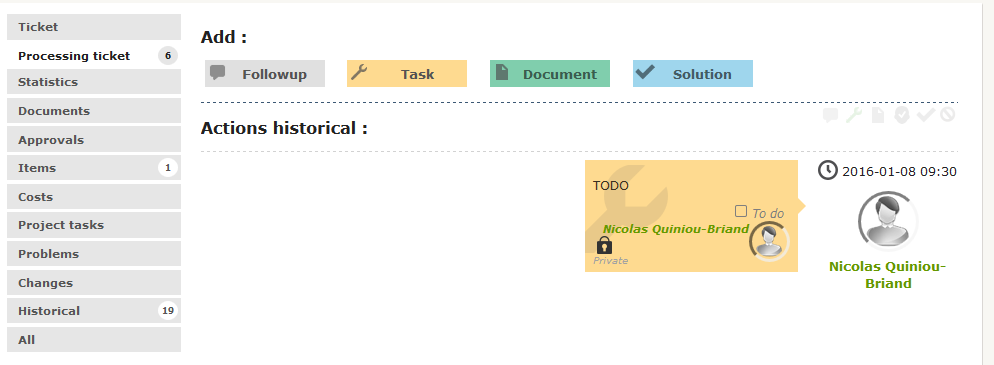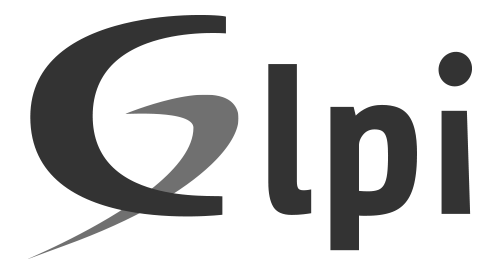Please check if the feature has not already been requested.
If not, please describe it

 Add an environment to test notifications templates
Add an environment to test notifications templates
Create an environment where we can test notifications templates. Today I have to develop and test the template sending the email to myself to see how are the template.

 GLPI GUI UX In HTML5, CSS3, SVG + Font Awesome and Bootstrap
GLPI GUI UX In HTML5, CSS3, SVG + Font Awesome and Bootstrap
The GUI of GLPI, its Stable, Simply, Clear... but it's very Ugly... some of new code will be good

 External reference for a ticket
External reference for a ticket
Ability to store an external reference to a ticket in another ticket system (for example a ticket opened in a bug tracker and pushed into GLPi using the webservice).
Store :
- URL
- ID
- Title

 Improve filters on timeline
Improve filters on timeline
- Add a filter for "To Do" tasks would be nice
- Increase contrast of selected filter(s). Actually, it's really difficult to see which filters are selected (see screenshot).

In the screenshot, task filter has been selected.

 Add parenthesis to request
Add parenthesis to request
It could be very useful to add parenthesis to request module allowing to create advanced request.
Example : requester is user and requester is not (x or y or z)
ticket by technician group is not ( x or y or z) and (requester is t and ticket type is p)

statistics
Hi !
It would be awesome to display statistics with multiple criteras :
For example, how many tickets by whom by location.
Thx a lot !

 To give rights to watchers to view tickets where they appear independently of entities
To give rights to watchers to view tickets where they appear independently of entities
Hello,
Imagine you have plenty of end-users with rights only on the self-service (=simplified) interface.
Imagine you have plenty of entities, and end-users have only 'post-only' rights on one of theses entities.
The need is to give the possibility to end-users to view (and depending on rights to edit) tickets for which they don't have the formal rights (different entities) when and only when they are assigned as watchers on these tickets.
Example:
Two users: U1 and U2 have respectively 'post-only' rights on entities E1 and E2. Let's create one ticket T1 in entity E1 with U1 as requester. In this case U2 cannot see (nor edit) T1. In this case T1 can't be seen by U2 (we can't even assign U2 as watcher due to entity restrict).
1) we would like to be able to assign any user (whatever entity rights he may have) as watcher.
2) we would like to permit U2 to be able to view and add followups to T1.
More:
Of course this should also be possible via groups as watchers. When users belonging to a group (assigned as watcher on T1) don't have formal entity rights.
This need can be linked to the 'carbon copy' of users at ticket creation: when a user is creating a ticket he/she may add any other user to be watchers (independently of entities).
Thank you,
Regards,
Tomolimo

 Coloration tâche dans un ticket
Coloration tâche dans un ticket
Il serait pratique de colorer une tâche dans le calendrier en fonction de la priorité du ticket auquel elle est associée
Customer support service by UserEcho


